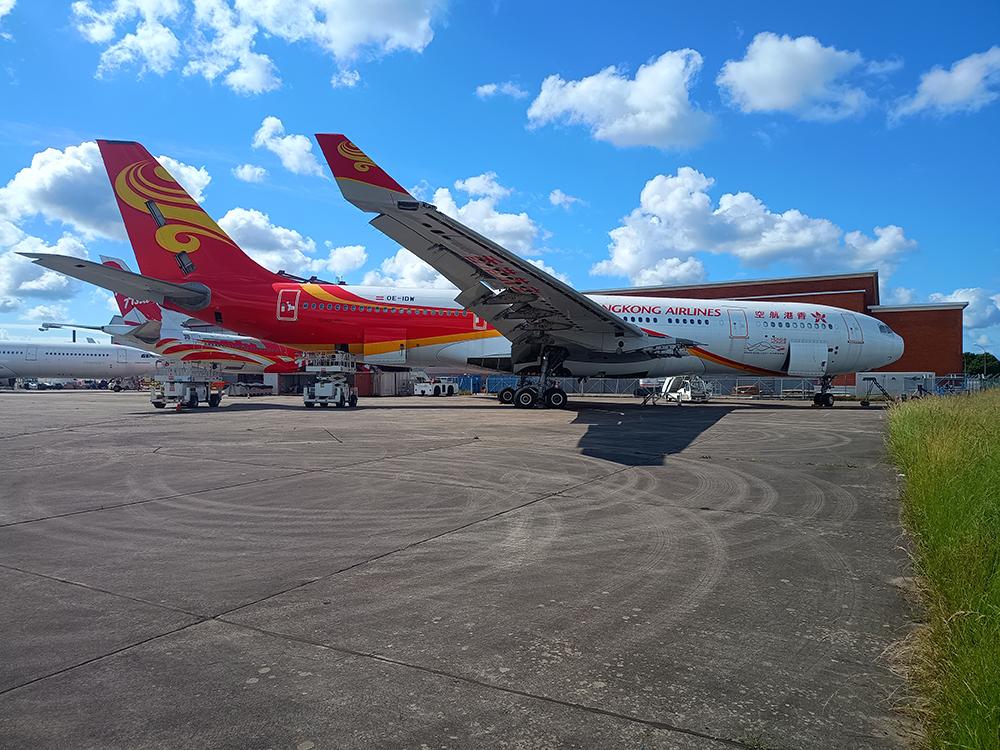
Danish spare components specialist Corax and Vallair have completed the teardown of a 23-year-old Airbus A330 airframe following their recently announced dismantling partnership.
The companies removed more than 1,500 parts, which are destined for the used serviceable material (USM) market. Corax President Morten Espenhein says around 20% of the parts fly off the shelf within the first 12 months. “There are a lot of high-value parts there, so they always move within the first year, and then you have a spin-off of the remaining 80% over 3-5 years,” he tells Aviation Week Network.
Considering that the A330 is not yet a sunset asset but still a rather mature platform, leasing companies in particular are still determining whether to sell the aircraft for dismantling, perform cargo conversions or lease them back into passenger service.
As with other maturing platforms, Espenhein says the maintenance costs start creeping up with age. “If you look at it per cycle, and as a freighter, you actually extend the life over many years, and not as many cycles compared to the costly passenger operation,” he says.
In terms of aircraft availability, lead times and the capacity for teardowns, Espenhein sees some changes in the market. As he observes, just a year ago, the lead time to get a teardown performed was one year, decreasing gradually to six months and currently to around three months. “There is a lot of capacity being freed up in the market right now because not many aircraft are heading for teardown,” he says
With fewer aircraft heading for dismantling—and staying in service longer—the impact could ripple across the USM market. Espenhein observes that the material supply flow is not as high as previously, so the market is generating a new level of pricing.
He also believes the gap between costly new OEM parts and USM is closing in. “This is driven by the supply and demand in the market, and the lack of parts availability is driving up the prices on USM to reach closer to the new part,” says Espenhein.
In response to recent industry discussions about quality control on USM parts, Espenhein feels the current oversight is more than just checks and balances, as much of the industry perceives. Rather, he says there has been a significant increase in compliance for USM components in the last two years. “There is a lot of awareness now with everything regarding compliance, paperwork traceability [and] non-incident statements, and if you don't comply, nobody's going to touch the part,” he says.
Espenhein suggests that, considering the supply chain issues impacting the aftermarket, there is now some stability as price increases seem to have leveled out. He also notices improvements in component repair turnarounds—from 30 days pre-pandemic and up to one year during its peak to a more modest 90 days currently.
“The key now is better planning,” he says. “If I want to send a part to the shop, I need to give [notice] of at least a few weeks so they can order the parts that have a little longer lead time than they used to.”
Espenhein says Corax is currently performing five teardowns simultaneously at five different global locations.





